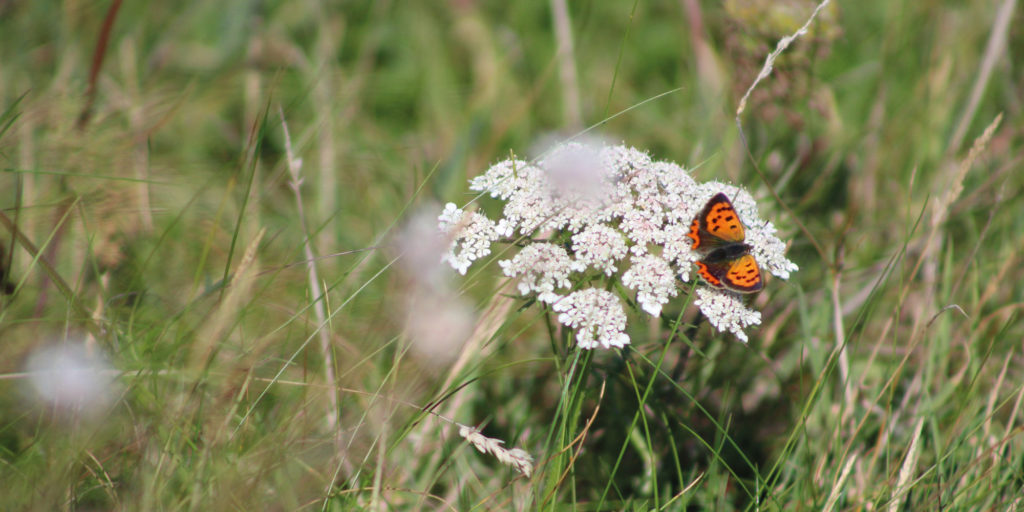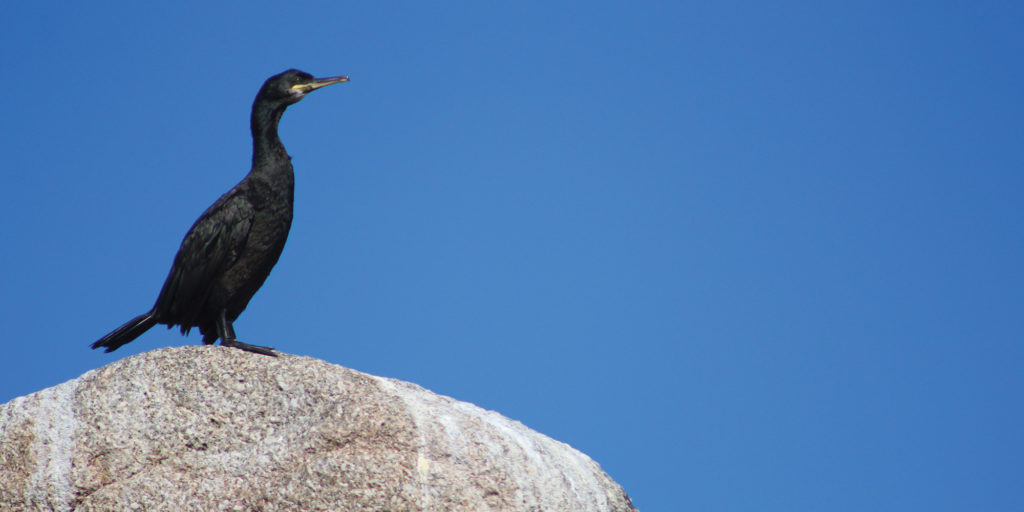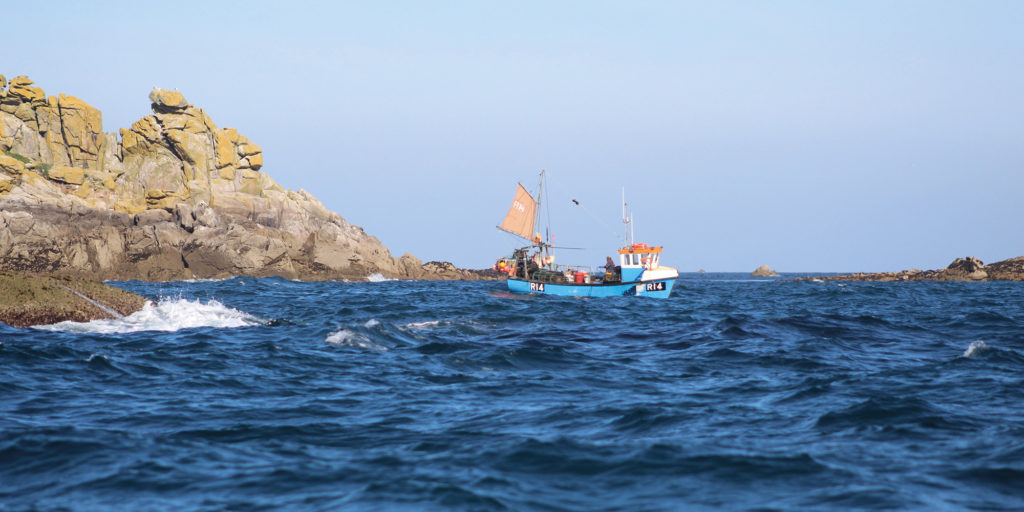Wildlife wonder
A weekend on Scilly reveals a thriving wildlife population, many unique breeds and a haven of untouched beauty.
Words by Andy Forster
The Isles of Scilly is a designated Area of Outstanding Natural Beauty (AONB), over half of which is looked after by local charity, the Isles of Scilly Wildlife Trust.
For me, the easiest way to travel to the Isles of Scilly is on the Skybus from Land’s End, taking only 15 minutes and running year round; it’s a brilliantly convenient way to travel. Upon arrival I head to Tregarthen’s Hotel, located on St Mary’s island; the hotel is situated right by the water’s edge, just yards from the quay where day boats gather ready to head off exploring the islands. It’s evening when I arrive so I head to the hotel restaurant and enjoy the catch of the day fish and chips as I admire the spectacular views across St Mary’s Harbour and out to sea. Known for its exceptional food and wonderful location, Tregarthen’s Hotel is a great base from which to explore the stunning archipelago.
“I admire the spectacular views across St Mary’s Harbour and out to sea…”
EXPERIENCE
If you’d like to book a stay at Tregarthen’s Hotel call 01720 422540 or visit www.tregarthens-hotel.co.uk
The next day I wake up to an unseasonably warm October morning and head to Porthcressa beach, St Mary’s. I meet with Darren Hart, the Isles of Scilly Wildlife Trust’s Education Ranger, to find out more about the Trust and its work. Our wildlife tour of St Mary’s is to take in Peninnis, Old Town Bay and the Lower Moors. As we walk and talk it becomes immediately apparent that Darren is passionate about both his job and Scilly. He tells me that beach-cleaning events across the islands have removed a staggering three tonnes of marine debris in 2019 alone, which is good news for the island’s thriving seal population. The Isles of Scilly AONB has many designations, including one of the highest available – a Special Area of Conservation (SAC) – due to its nationally important population of seals. The Atlantic Grey Seal, is amongst the rarest seals in the world and the islands boast one of the largest breeding colonies in the south west.
It’s not just the marine life that falls under the responsibility of the Trust; it has also taken on a significant land management programme that has seen more than 40,000 metres of paths being cut annually to allow better access across the islands. Darren also tells me that over five hectares of heathland and wetland have been cleared of invasive plant species to allow wild flowers to thrive. As we reach the Lower Moors, which is a Site of Special Scientific Interest (SSSI), I also discover that a second year of hydrological monitoring has been completed here which will ensure that biodiversity is protected and enhanced and sustainable water quality targets are achieved for the future. As a charity, the Trust relies on grants, donations, membership and legacies to carry out its essential work – a donation to the Trust ensures the protection of Scilly’s wild places for generations to come.
Elsewhere on Scilly, wild bird communities are thriving, not least the islands’ annually returning breeding colony of Manx shearwaters. To end my first day’s foray, I join Vickie Heaney, the Trust’s resident seabird ecologist for a ‘chick check’ on Penninis Head. A staggering 43 chicks have already been identified, all in St Agnes where the Seabird Recovery Programme has done wonders for the bird population, by controlling the rat numbers. Vickie tells me that there are no chicks yet on St Mary’s, but that there are breeding pairs, so we are hopeful that we might be successful with our evening’s search.
TRAVELLING TO THE ISLES OF SCILLY
Isles of Scilly Travel provides Skybus services to St Mary’s island from Land’s End, Newquay and Exeter. Or you can catch the Scillonian ferry from Penzance. (www.islesofscilly-travel.co.uk)
Vickie plays a recording of a Manx shearwater’s call, and I’m delighted to hear that there is a response from a chick. However, despite searching under stones, as the shearwaters are burrow nesting birds, our hunt for chicks sadly doesn’t come to fruition that evening. But on my return to the mainland I hear some great news from Vickie: “I wanted to update you on the chick we heard out at Peninnis. I’m just back from checking on it this evening. It was dark and foggy and when I got there at 9pm the chick was already sitting outside the burrow entrance – it was still really quite fluffy (adult feathers all there, but still a lot of down left around its head and shoulders). It shuffled back in and I sat for a little while outside. I think it has another week or two before it heads off to Brazil and I will go out again to see if I can get a recording of its ‘teenager’ squeaky call!”
The next morning dawns bright and fine and I make my way eagerly to the quay to join a St Mary’s Boatman’s Association wildlife trip to the Eastern Isles. There’s nothing quite like the sights and sounds of St Mary’s quayside. The Scillonian III occupies her prominent berth, while happy holidaymakers board the off-island boats ready for a day’s excursion. The Eastern Isles are a group of eight islands that can be found to the south-east of St Martin’s. They are not only home to one of the largest breeding colonies of Atlantic grey seals, but also provide a habitat for eight breeding seabird species including the shags and puffins. The water is calm and the sun high and our trip feels like something of a mini cruise. Cormorants and seals abound, all enjoying a spot of sunbathing on the rocks. We are out on the water for an hour and half, which goes in a flash as there is so much to see. Although, sadly, the elusive puffin is precisely that.
EVENING DINING
I can wholeheartedly recommend the lobster night at Longstone Cafe, providing delicious fresh food in an amazing location (www.longstonecafe.co.uk).
As a Dive Master, my final underwater exploration of the weekend is much anticipated. In the company of Anna from Scilly Seal Snorkelling I get the chance to look beneath the waters of the Eastern Isles. And it’s a whole other, ethereally beautiful world. The sandy shallows teem with fish, shrimps and crabs all set against the pristine white sand that Scilly is famous for. We’re not under the water for more than a few minutes before an Atlantic grey seal glides into view. Her grey body glistens as the sunshine penetrates the surface from above, set against the stunning brown kelp forests beneath. As she turns towards me her giant black eyes are like jet pools. In a magical moment, a smaller male swims up to her and as I watch in awe, they appear to cuddle and kiss. Neither are afraid of our presence and are happy to swim with us for most of the time we are in the water. There couldn’t have been a more fitting end to my wildlife adventure on Scilly and it certainly won’t be long before I’m back!
TRANSPORT ON THE
ISLES OF SCILLY
As well as the St Mary’s Boatmen’s Association (01720 423999), other ways to get around St Maryís island by land include Paulger’s Passenger Transport (01720 423701) and Toots Taxis (01720 422142).
"I admire the spectacular views across St Mary’s Harbour and out to sea..."






